Raising cattle might be worth trying as a way to expand your homesteading horizons. Raising cattle can supply you and your family with homegrown meat and dairy products while teaching your kids valuable life lessons. Owning cows can also provide a second income if you’re interested in selling meat and dairy products at the market.
However, before you purchase your first calf, you’ll want to consider what breed of cattle will serve your needs to best. Check out some of these breeds to find the best fit for you and your farm.
Details To Consider
If you are raising cattle, the breed makes a big difference in the characteristics of the animals and the quality of the product.
Establish Your Needs
The first thing you’ll need to ask yourself is what the primary purpose of your cattle will be. Every breed has a different set of characteristics, but they can be grouped roughly into three categories; beef cattle, dairy cattle, and dual-purpose cattle. As their names suggest, varieties in each breed excel at a certain task.
Size Differences
All full grown cattle are large, but they vary widely in size. The smaller breeds like Dexters and Jerseys can be as small as 600 lbs. when they’re full grown, standing anywhere between waist and chin height.
https://www.instagram.com/p/Bl6yWMagRmy/?tagged=raisingcattle
The largest breed of cattle in the world is an ancient Italian draft and beef breed called Chianina, with the bulls weighing as much (or more) than 3000 lbs. Holsteins and Angus are other large cattle breeds. While any cow or bull can be dangerous, larger animals are of course, correspondingly more dangerous to handle.
Your Climate And Location
Another consideration is your climate. Cows get too hot and too cold like any other animal. The darker their coats, the more susceptible they are to overheating, which can lead to fatigue, reduced production, even heat stroke. A cow with a red or mottled hide will be cooler in the summer and is better suited for hot climates than a black cow.
Beef Cattle
Angus
Considered the gold standard of beef in much of the world and an American staple, Angus are originally a Scottish breed.
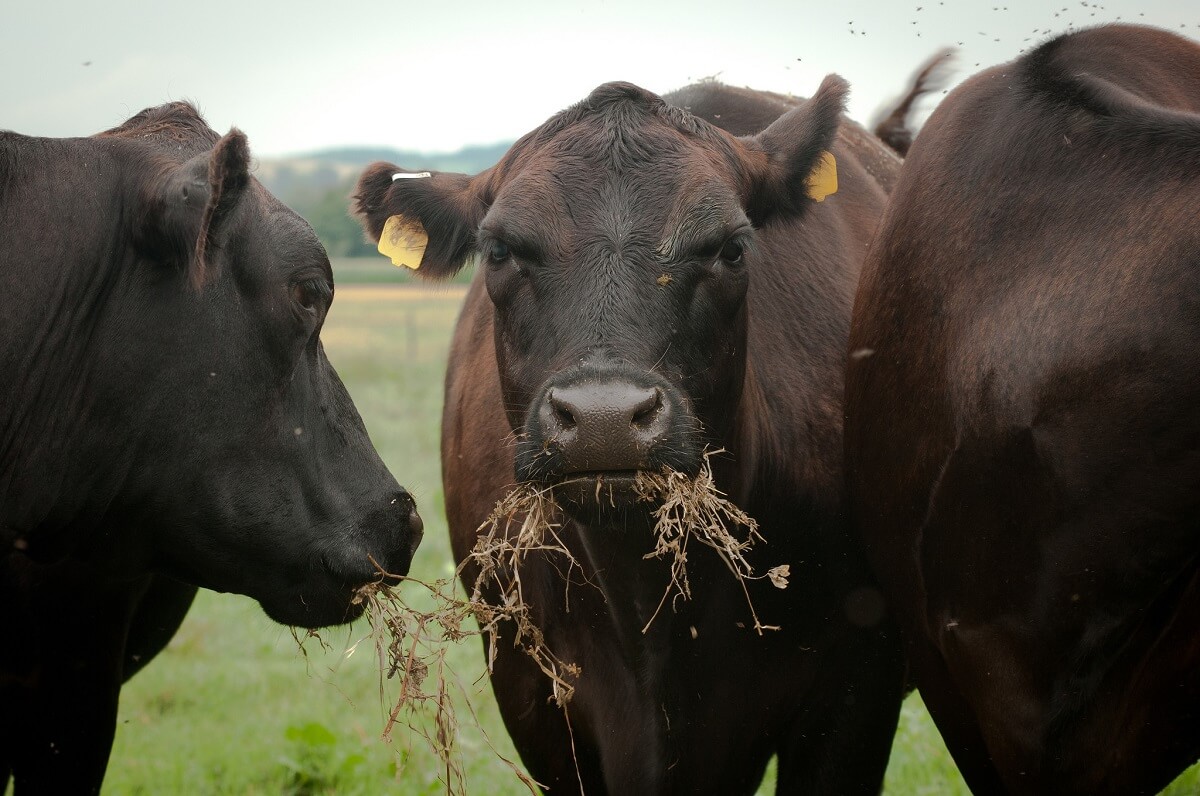
Angus are either black or red, usually without other markings. Their easy-going temperament and marbled meat has made them a star beef producer. They are hardy in cold climates, though black Angus can overheat in hot climates. Angus mothers have a strong maternal instinct and typically give birth to healthy, vigorous calves.
Hereford
Herefords are an English breed developed in the 1700s. They are red, typically with white faces and bellies, and grow between 1200-1800 lbs.
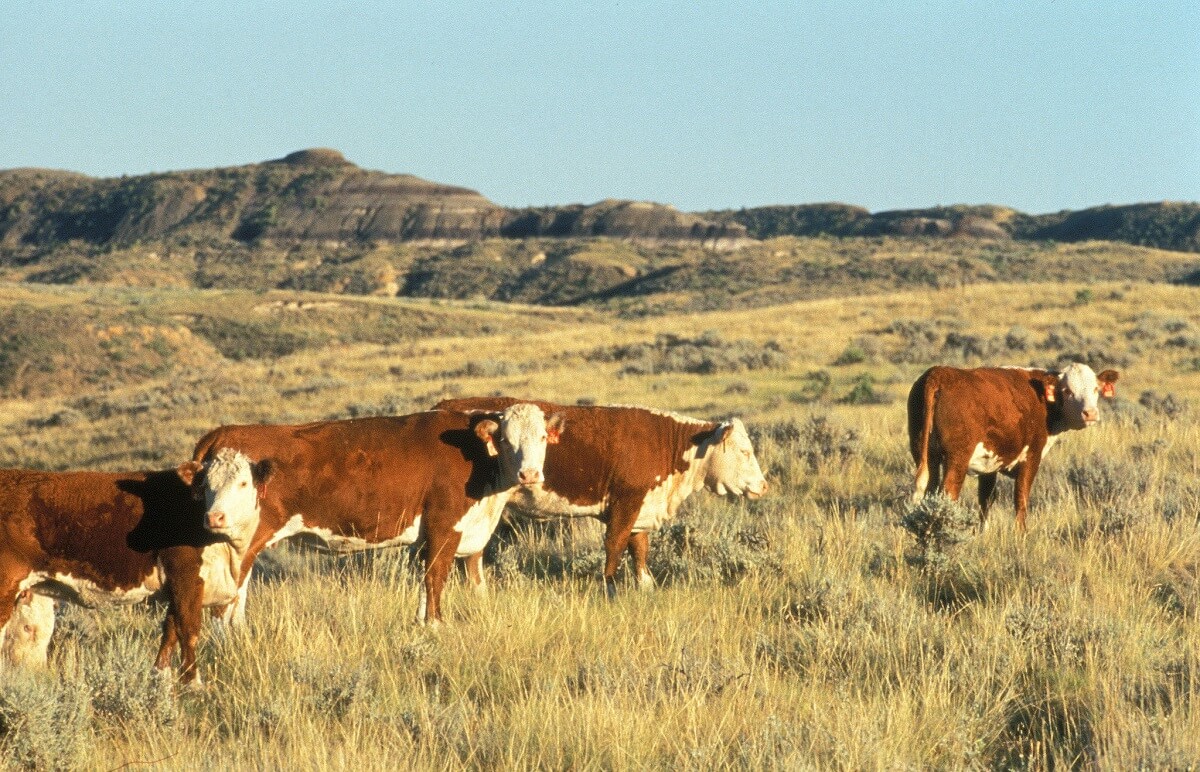
Their constitution is hardy in a variety of climates and their temperament is docile, making them a favorite beef breed all over the world.
Breeding Herefords are also productive for an unusually long time, up to 15 years in some cases, making them a profitable calving breed.
Limousin
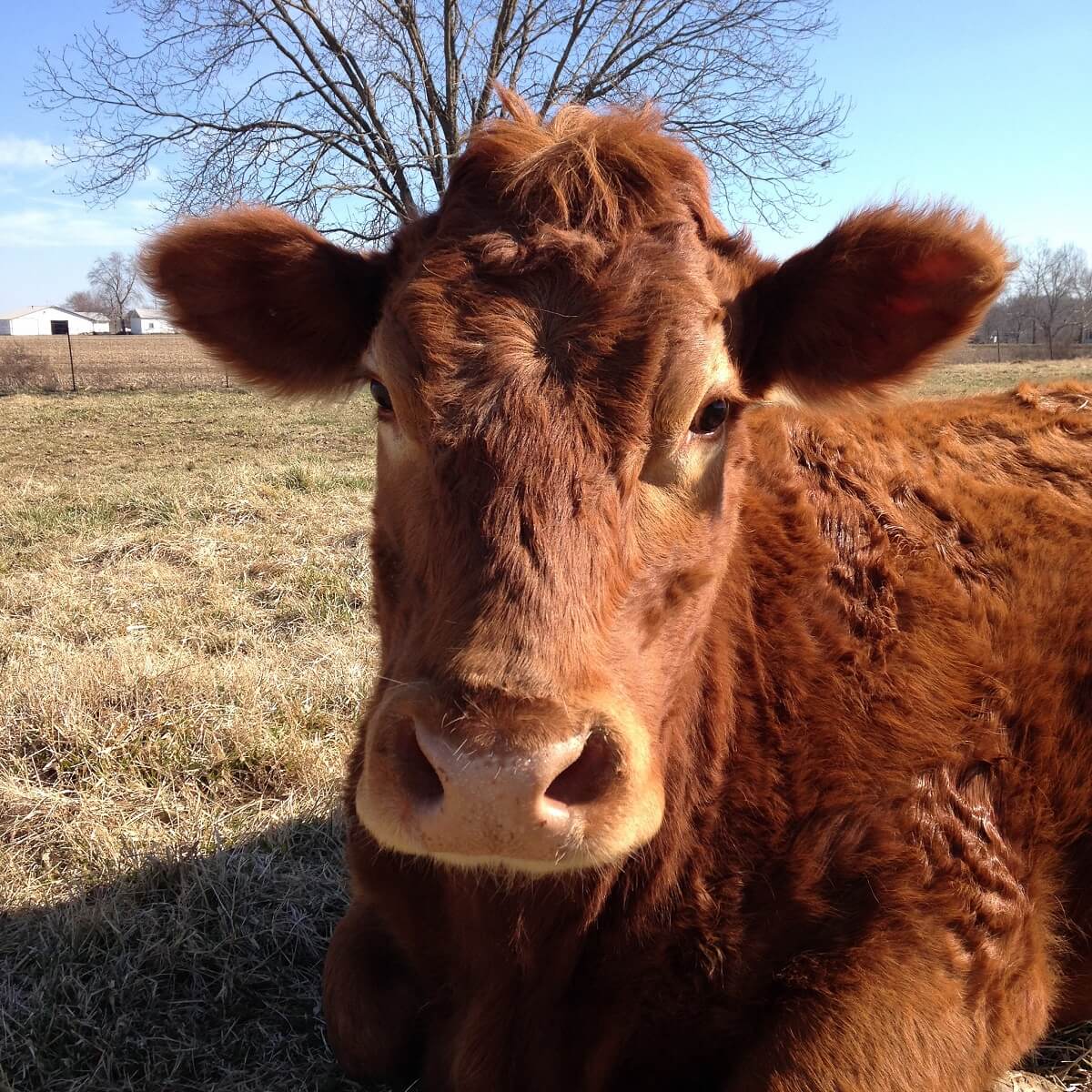
A light brown cow historically used for draft-work in France, the Limousin is most commonly crossed with other breeds like Angus.
Galloway
A Scottish cow with a furry, curly coat, Galloways are excellent for cold climates. They are hardy, mid-sized animals weighing up to 1500 pounds as cows and 2000 pounds as bulls.
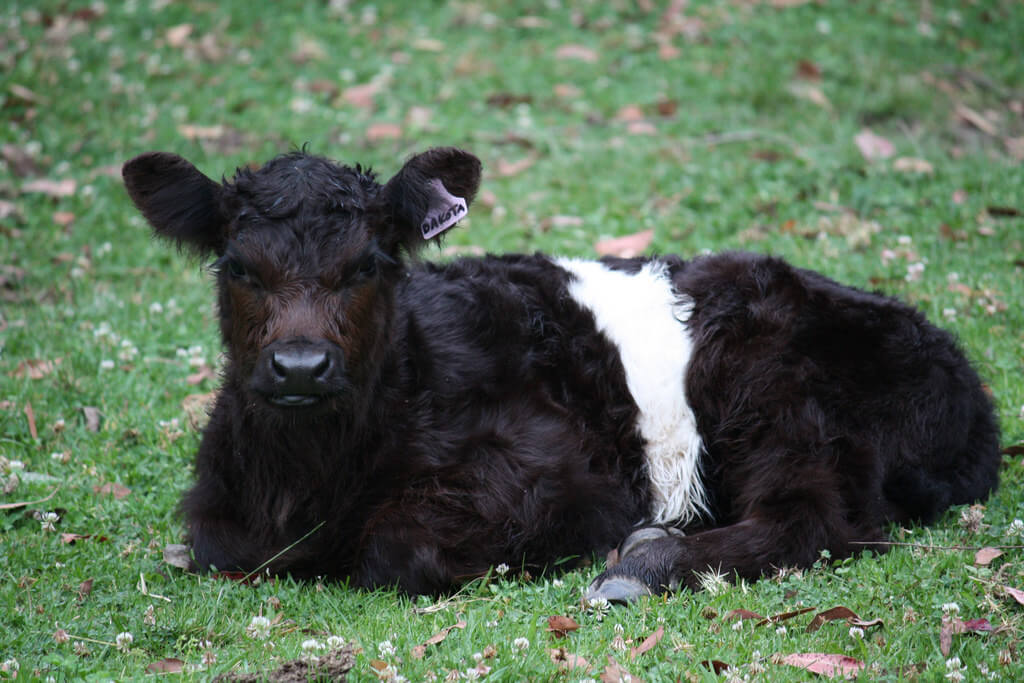
Popular in the mid-1800s for their high feed-to-meat conversion efficiency, they became less popular as demands for leaner beef increased. They are naturally hornless, which is an added convenience for anyone breeding cattle, as it eliminates the unpleasant process of de-horning.
Texas Longhorn
Probably most familiar as a cultural icon of the state that bears their name, rather than as a cut of meat on a dinner plate, Texas Longhorns have a storied history and an interesting future. Unlike many of the other breeds of domestic cattle discussed here, Texas Longhorns developed their characteristics independent of human intervention.
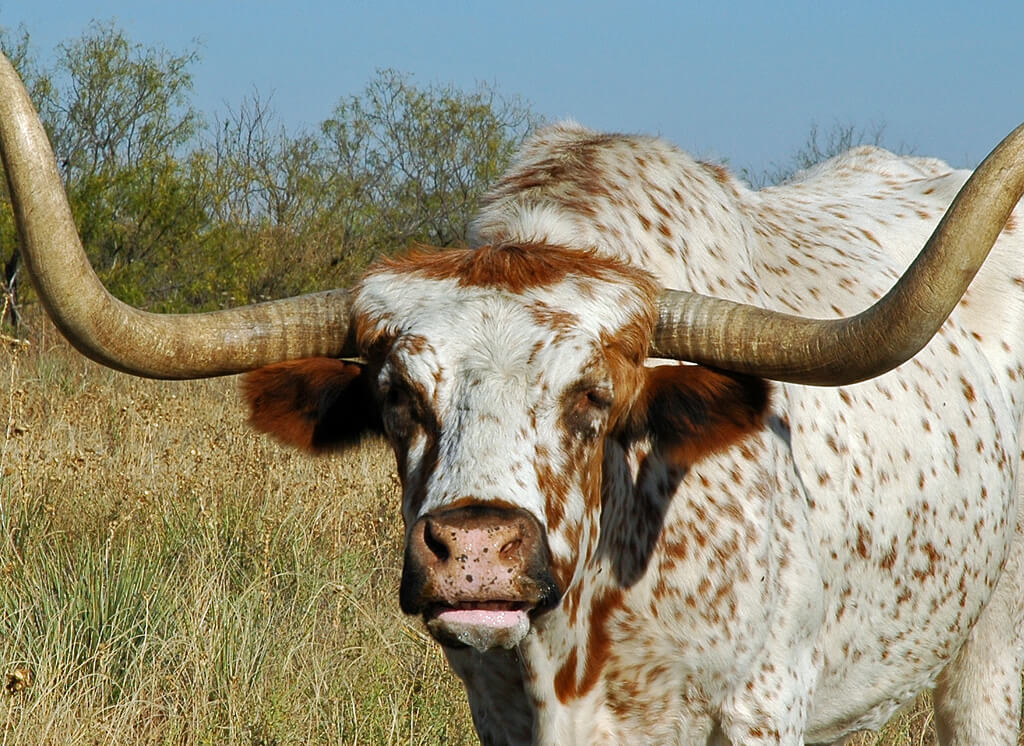
During the 1800s they filled the ecological niche left by the elimination of the native buffalo of the American Great Plains. Considered feral, and of little economic value, cross-breeding and hunting virtually eliminated the Texas Longhorn population around the turn of the 20th century.
Conservation efforts saved them, and today Texas Longhorns have great potential as beef cattle in the current market, since they are unusually lean, and America has an ongoing demand for low-fat meat. They also are a sustainable breed, with unusually high disease resistance due to their wild heritage and a willingness to forage and subsist on sub-par vegetation that would not provide sufficient nutrients to other cattle.
Dairy Cattle
Dairy cows are bred to be highly productive in milk and relatively docile so they can be easily handled every day by humans.
Of course, cows vary individually in temperament. But most dairy cattle are calm. They also tend to be leaner in the hips and shoulders and have less desirable cuts of meat when butchered.
Holstein
The Holstein is the classic black and white “dalmatian” cow familiar to children everywhere from picture books and cartoons. Originally from France, these are the dairy industry standard, one of the most productive breeds of cattle for sheer volume of milk production.
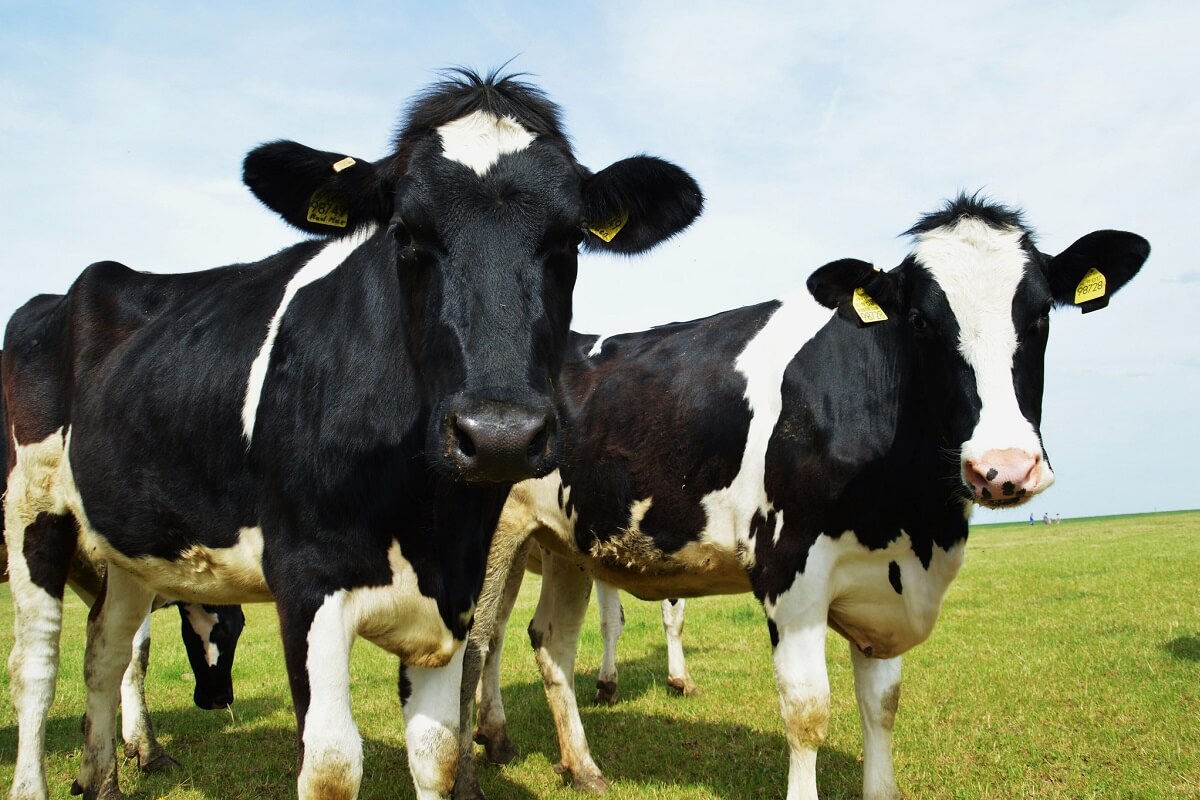
94% of all the dairy cows in the US are Holsteins because of their astonishing milk production: almost 9 gallons a day. Holstein cows are typically gentle and agreeable to work with, but Holstein bulls are quite aggressive.
Jersey
Jersey cows are a relatively small, productive breed, weighing only about 900 pounds fully grown, with brown coats ranging in color from dark chocolate to gold marshmallow. These cows were some of the earliest kept by colonial settlers in North America.
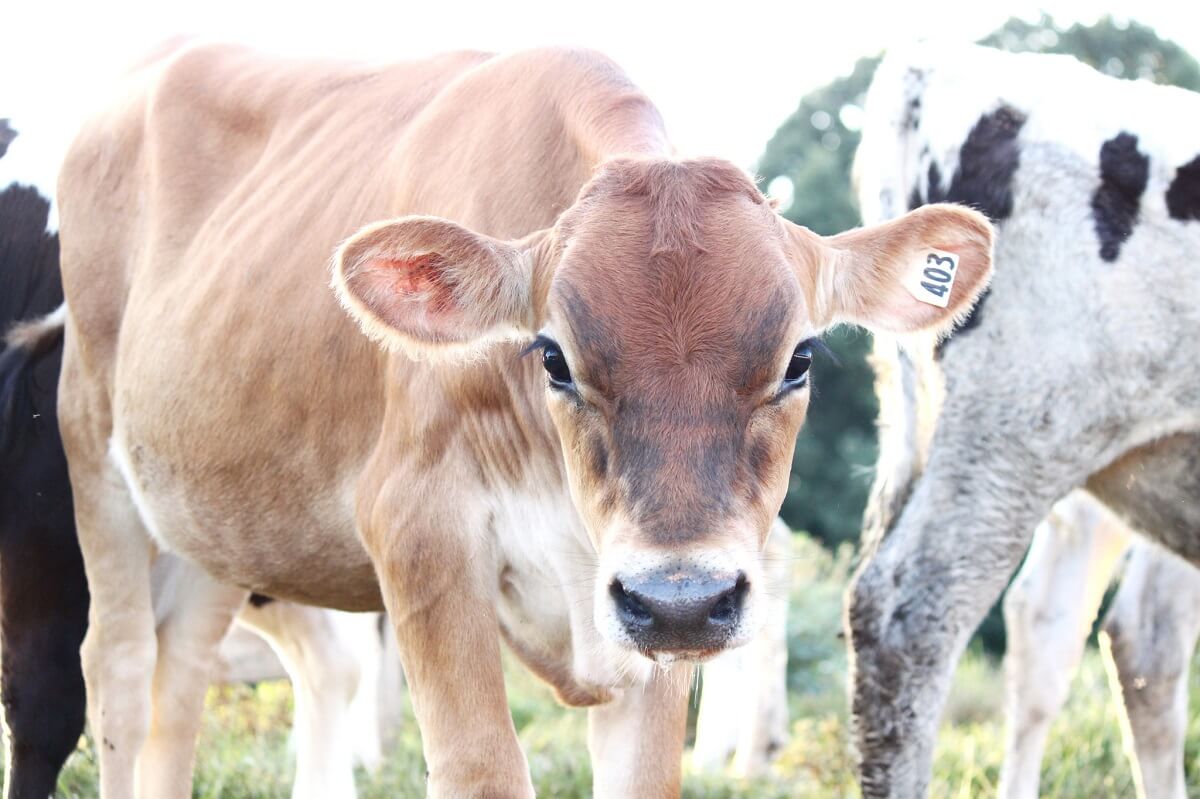
Jerseys produce unusually nutritious milk, with 18 percent more protein and 25 percent more fat than the industry standard Holsteins.
A Jersey in her prime will milk about 5-6 gallons a day. Jerseys are typically sweet and well behaved and are considered good mothers.
Guernsey
Named after the island in the English Channel where they originated, Guernseys are brown and white spotted cows, about the same size as Jerseys. Because of their pale coat, they are tolerant of high temperatures and well suited for hotter climates.
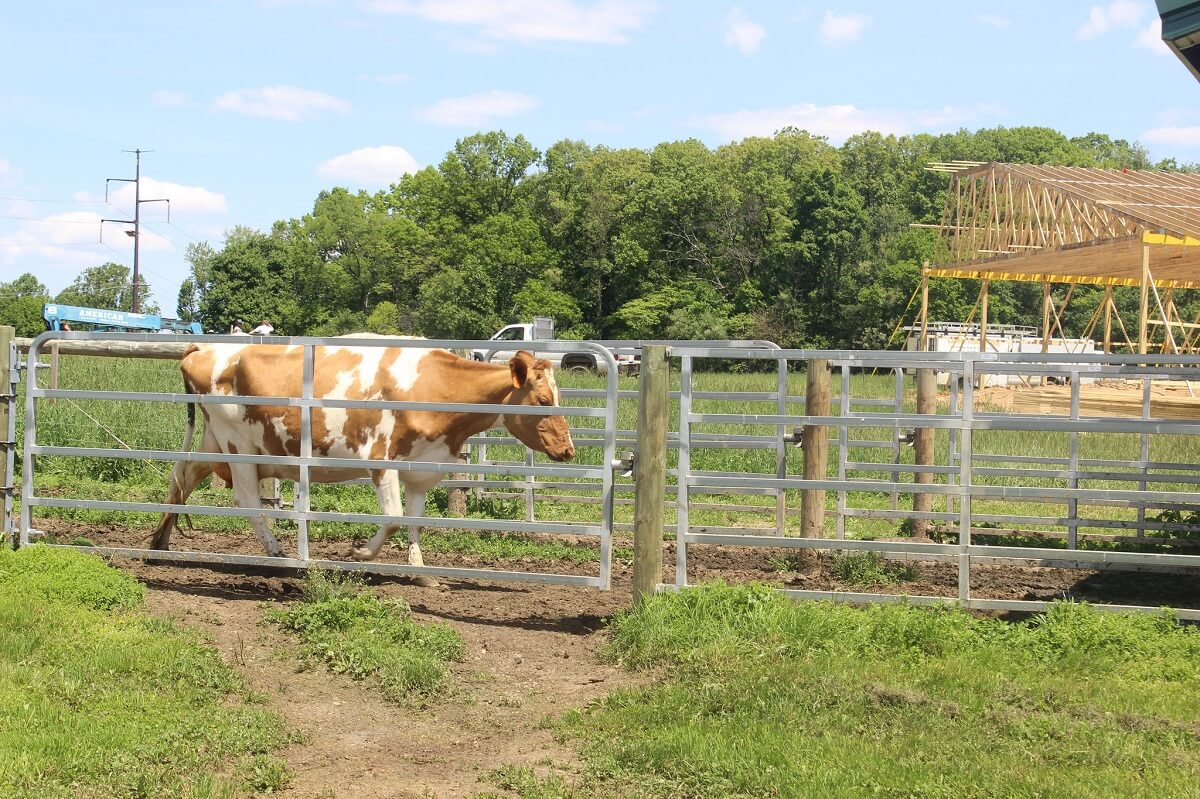
They are known for birthing strong calves and having few complications during calving. Guernseys produce about 4.5 gallons of milk per day, with a product that is high in vitamin A.
Dual Purpose Cattle
Dual purpose breeds are considered acceptable for both milk and beef, but are less productive and efficient at both. Many heritage breeds fall into this category. In the past, most farmers didn’t specialize in meat or dairy. Livestock that served both purposes were vital.
Dexters
Dexters are of Irish origin, and bred for their small size. They’re among the smallest cattle breeds in the world. Dexter stand just under four feet high at the shoulder when full grown, and weigh less than a thousand pounds. Because of this, they don’t eat nearly as much as larger breeds, and have a high feed efficiency, making them ideal for grazing on limited ground or poor-quality forage.
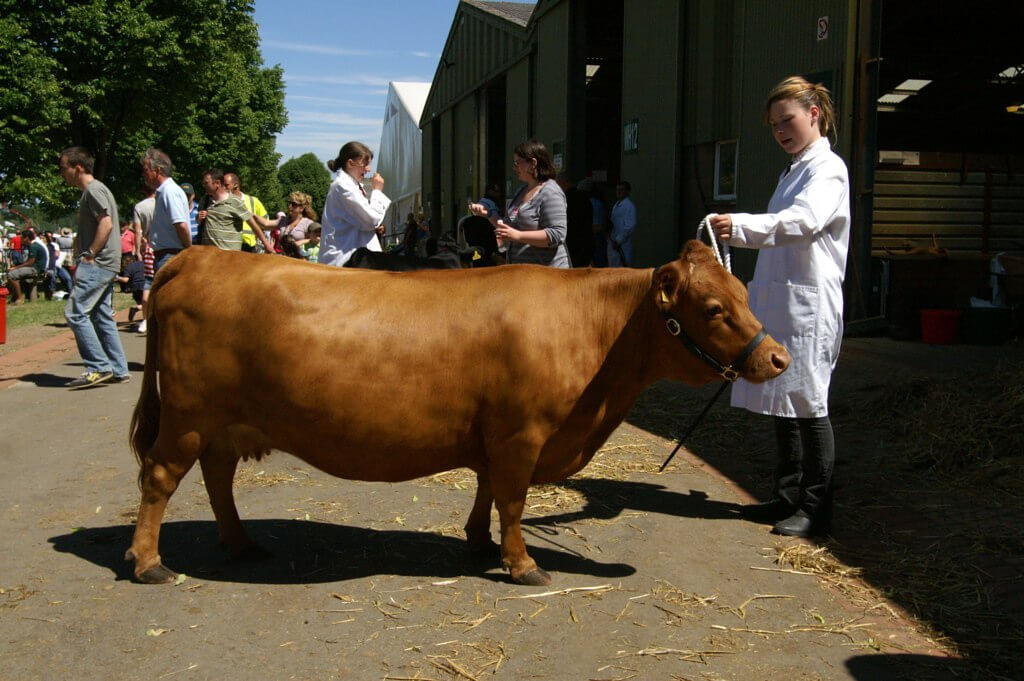
Dexter beef is relatively lean, and they are steady milk producers with good mothering instincts. This combination has contributed to a recent resurgence of interest in the breed for homesteaders and small family farms.
Simmental
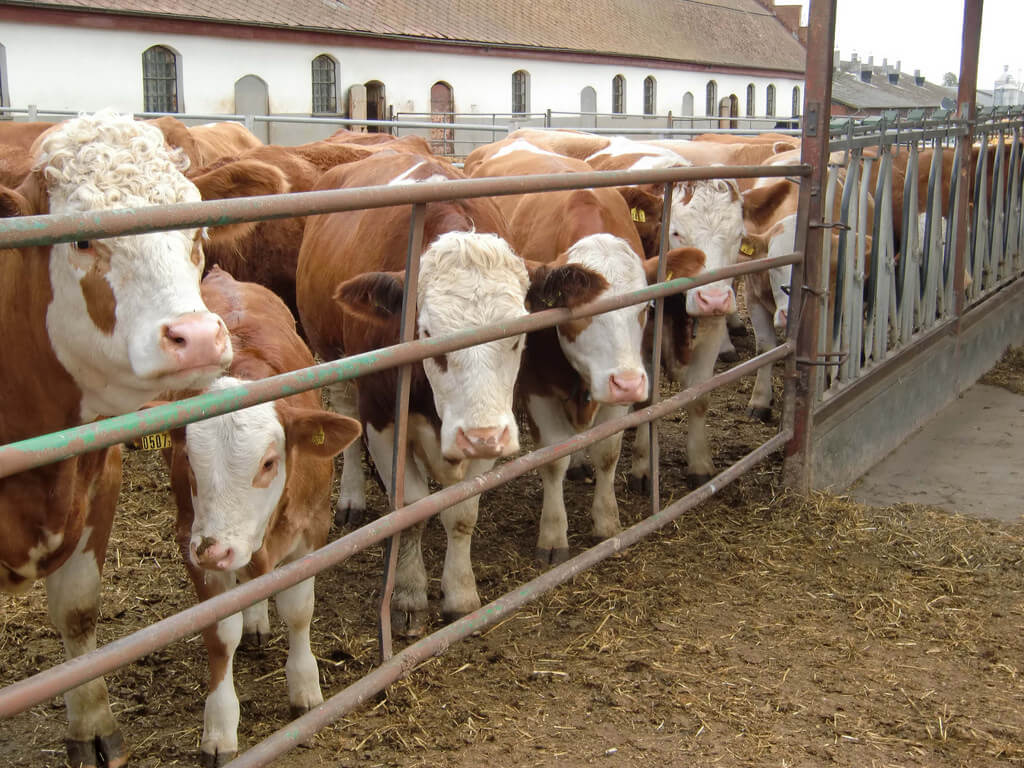
A Swiss breed, Simmentals grow quickly, and provide both good beef and good dairy production. In the US they are typically only raised as beef cattle, but in other parts of the world they are common dairy cows.
Shorthorns
Like many dual-purpose breeds including Dexters, Shorthorns vary in their use depending on the breeding line.
https://www.instagram.com/p/BWd8SMLgYBB/?tagged=shorthorncattle
You can buy unique lines of shorthorn dairy cows or shorthorn beef cattle, although both lines will be more dual purpose than breeds specifically for milk or meat. They are relatively small, bulky animals with middling milk production.


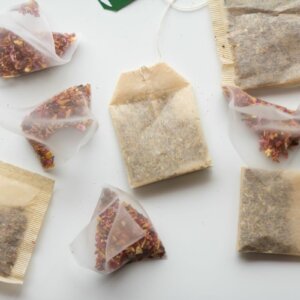
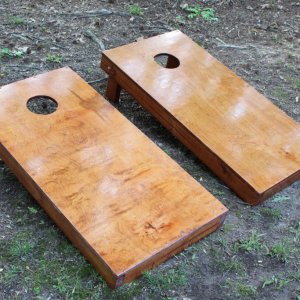

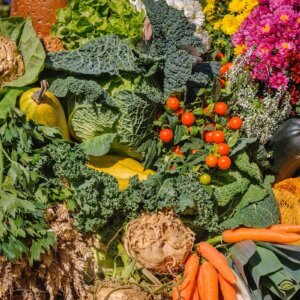
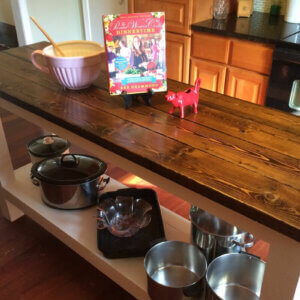


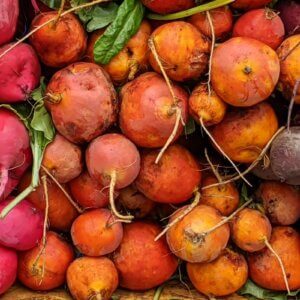
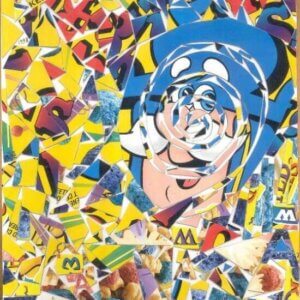

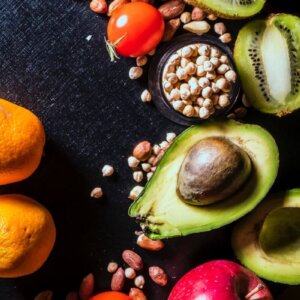


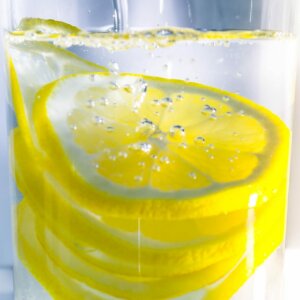

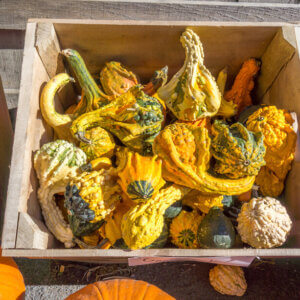



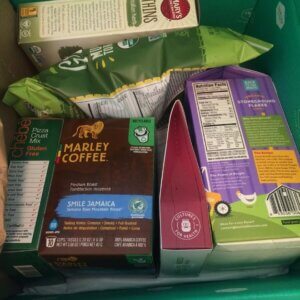
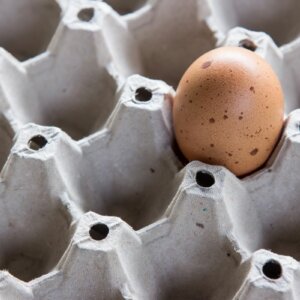
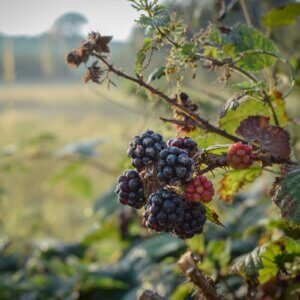
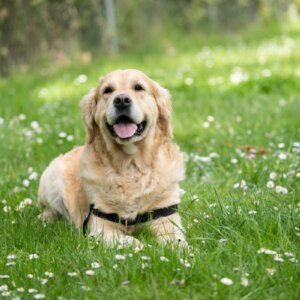

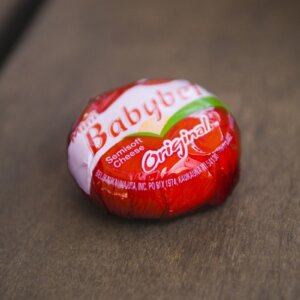
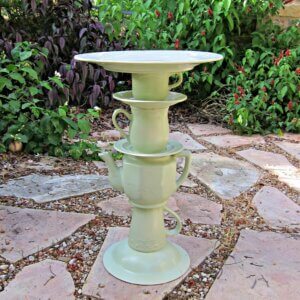

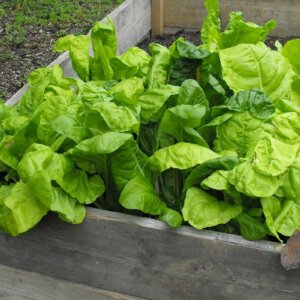
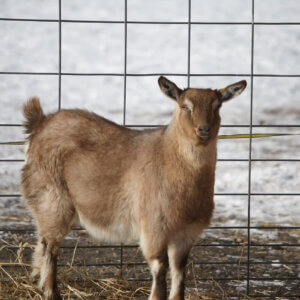
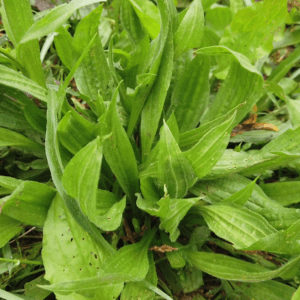

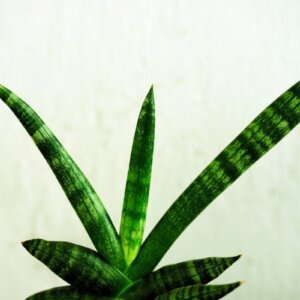

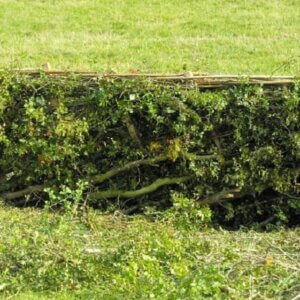

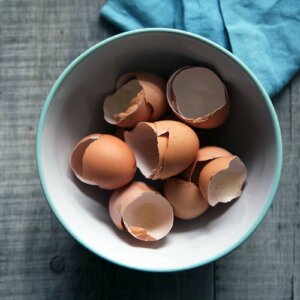

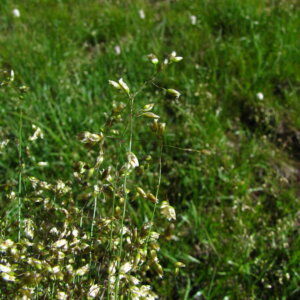


It’s so cute that Dexter cows are so small. Four feet is pretty small for a cow. How were they bred to be so tiny?
Dwarfism gene. I own an Irish dexter, use her for milk and her calves as beef
Kindly I wanna know in Details types of dual purpose breed and their characteristics. Thank you
Lucia Wyss has absolutely no idea what she is talking about when describing breeds of cattle. As a Veterinarian, who grew up on an old style dairy farm in the 50’s and 60’s, I can say without a doubt she is misrepresenting the characteristics of most of the breeds. As an example her description of Shorthorn cattle is totally inaccurate. They are not small and bulky giving no milk. In actuality females can be up to 2000# and males to 3100#. That is why they are the most popular breed used for oxen in oxen pulling contests in the NE USA. A Shorthorn cow has held the world record for most milk production in the past. That is why they are so popular as a family cow. To get the facts go on Shorthorns go to wwww.heritageshorthorn.org.
Braunvieh should be added to the dual purpose, I have found them to be excellent dual purpose. Great disposition and easy to handle for beginners, the cows are great family milk cows and are great beef cattle as well.
I have heard the Normande is an excellent dual purpose cattle breed.